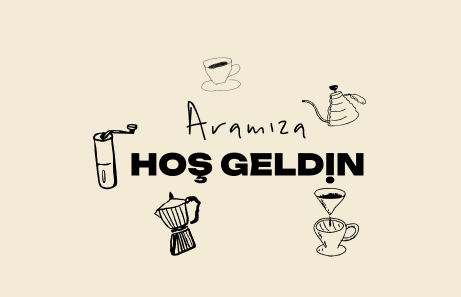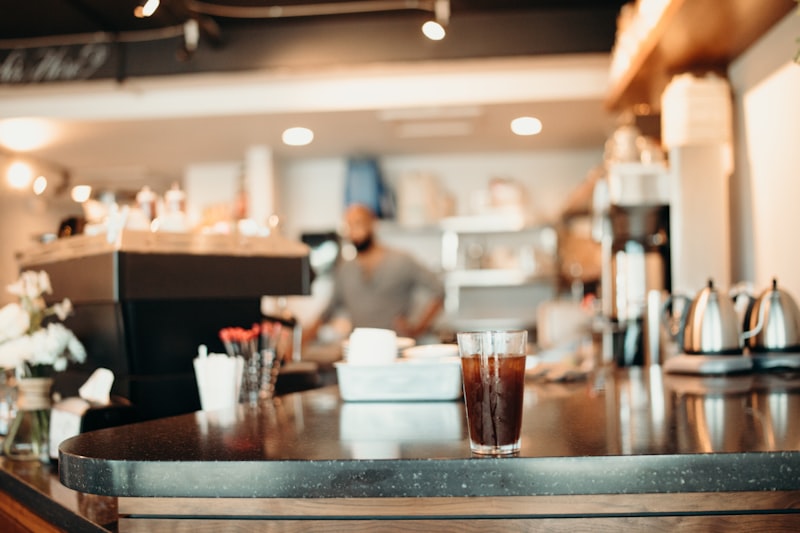The origin of Dutch coffee dates back to golden ages. Dutch coffee, which has a history in its past, is prepared with cold water, not with the commonly used hot brewing methods. The brewing time ranges from 3 to 6 hours on average.
The use of cold water in brewing has many benefits that compensate for the longer brewing time. Dutch Coffee brewed with cold water is more difficult to oxidize and allows you to taste the finest fruity aromas in coffee. Due to the lack of oxidation, Dutch Coffee has lower acidity and less bitterness compared to hot coffee brewed with the same beans. Let's give you another good news besides the beneficial flavor features of Dutch Coffee; very few calories! Since the oil in Dutch coffee does not dissolve in cold water, you do not need to calculate calories while consuming it.
- You may be interested in: Cold Brew benefits
Thanks to the patient brewing method used in making Dutch coffee, all the aromas in the coffee beans emerge gradually. The slow and cold brew method applied combines all kinds of fruity flavors with a chocolatey aftertaste. You may even think that you are eating a wonderful Belgian chocolate while drinking. Dutch Coffee can surprise you with wonderful flavors that will allow you to discover coffee in its purest and fullest form, and that you cannot find in the same coffee with the hot brew method. This is why Dutch coffee is known in Asia as the "wine in the coffee".
How did the Netherlands meet coffee?
Dutch botanists know enough about coffee and coffee farming as they visited the Arabian peninsula and the Ottoman empire. Therefore, the fact that the coffee monopoly was only in the hands of the Arabs was a situation that the Dutch could not understand. According to them, there was no reason why the coffee monopoly should not fall into their hands.
The Arabs did not allow any coffee seeds to go out of the border for coffee imports. However, this was not an obstacle for the Dutch. The first trial was carried out in 1607 by the Dutchman Pieter Van Dan Broeck. The coffee sapling he smuggled out of Yemen withered due to the cold weather. The second trial came from a Muslim pilgrim named Baba Budan. He tied 7 coffee beans to his stomach and took them outside the Ottoman borders. At that time, India as the VOC (Dutch East India Company) was a Dutch colony. In this way, coffee seeds passed into the hands of the Dutch again. Along with being planted in Mysore region of India, they established large plantations in Java, Sumatra, Timor, Celebes and Bali regions. In 1706, the first harvest of coffee beans and a coffee seedling from Java were sent to the Netherlands, and the coffee seedling was planted in the Amsterdam Botanical garden. This coffee was the ancestor of the coffee seedlings to be planted in the Americas, which is called the new world in the future. In 1714, the Mayor of Amsterdam, King of France XIV. With the gift of a coffee sapling to Lodewijk, the coffee falls into the hands of the French, apart from the Dutch.
- The Dutch were the best merchants of the middle ages and had the best merchant ships of the time.
It has been debated for years whether the coffee seedlings grown in the Americas were planted by the Dutch or by the French. The Dutch made Amsterdam the center of Europe's coffee trade, and from there they took Guyana and established their first coffee plantations. Being one of the first coffee traders, the Netherlands started to drink coffee at home in the 1600s and the first Cafés were opened in 1665. Only elite people could enter here. Although the Netherlands was Europe's second trader of coffee, coffee did not play such a large role as in Italy or France. Nowadays, coffee is given great importance and cafes that make very distinguished Specialty Coffee have been opened. Amsterdam has an important place in today's Specialty Coffee industry. The biggest contribution of the Dutch to the coffee culture was the first nation to bring coffee to the Americas.
Café Culture in the Netherlands from Past to Present
The first coffee house opened in 1665. Coffee houses in the Netherlands were located in places where there was more trade. Although the Netherlands was introduced to coffee early, the coffee house culture was not very developed. Because instead of developing the coffee culture, it was much more interesting to trade it. The task of the Dutch, who were closely involved in the coffee trade, in the history of coffee, was perhaps to ensure that the coffee beans were distributed all over the world. That's what happened. The Dutch distributed coffee to India, Indonesia, and Latin America. Improved Cold Drip brewing techniques. Although based in America, Starbucks was opened thanks to the ideas of a Dutchman.
- You may be interested in: Health Benefits of Filter Coffee
What about nowadays? Today, an incredible coffee culture has emerged. Especially in Amsterdam, Den Haag and Rotterdam, Specialty Coffees are opened one after the other and many places roast their own coffee. Each Café welcomes its visitors around the clock, just like a coffee school. Dutch Baristas, on the other hand, participate in competitions around the world and achieve degrees. Free workshops on different brewing methods are held at a different location every week. In this way, both baristas come together and coffee lovers are informed.
We would like to open a separate parenthesis for Amsterdam. Because Amsterdam has become a 3rd wave coffee center on its own. If you visit Amsterdam, you should set aside at least 2-3 days to visit the Cafés.
Difference between Dutch Coffee and other cold brew methods
One may wonder about the differences between Dutch Coffee and coffees obtained by other cold brewing methods. The answer is not complicated at all because there is no difference! That is, iced filter coffee , cold filter coffee, etc. All of the coffees lead to the same door. In Japan, people refer to this brewing method as Dutch Coffee. In other countries, where Dutch Coffee is rapidly gaining popularity, cold filter coffee is also called iced filter coffee.
For another example, let's take a look at the beginnings of the Japanese cold coffee culture. Although the cold brew method used and widespread in the Kyoto region of Japan is known as "Kyoto", there is no difference between Kyoto and Dutch Coffee. Some people say that the original name of the method is Dutch Coffee, so they prefer the use of Dutch Coffee. You decide which one you want to prefer. See you later!








